Kiteboarding Tricks | Adding Style to your One-Footers
David is back with the sequel to his How to Do One-Footed Airs video. Here, you can learn some variations on your one-footers. Remember that you can add these into tricks like Frontrolls or other rotations!
Standard One-Footer
With the standard one-footer, which we covered in the previous video, you're pointing your leg straight down. You're not going too wide, though you can tweak the board itself a bit to make it look a little nicer.
For example, you can extend both legs, and then the board's going to be up at a bit of a diagonal. This looks nice and clean because it looks very controlled compared to some of your first ones where you're sort of crunched up with your legs extended out just as quick as you can. These standard ones are still nice because there isn't too much difference from your initial ones, but they'll show you've got a bit more control now.
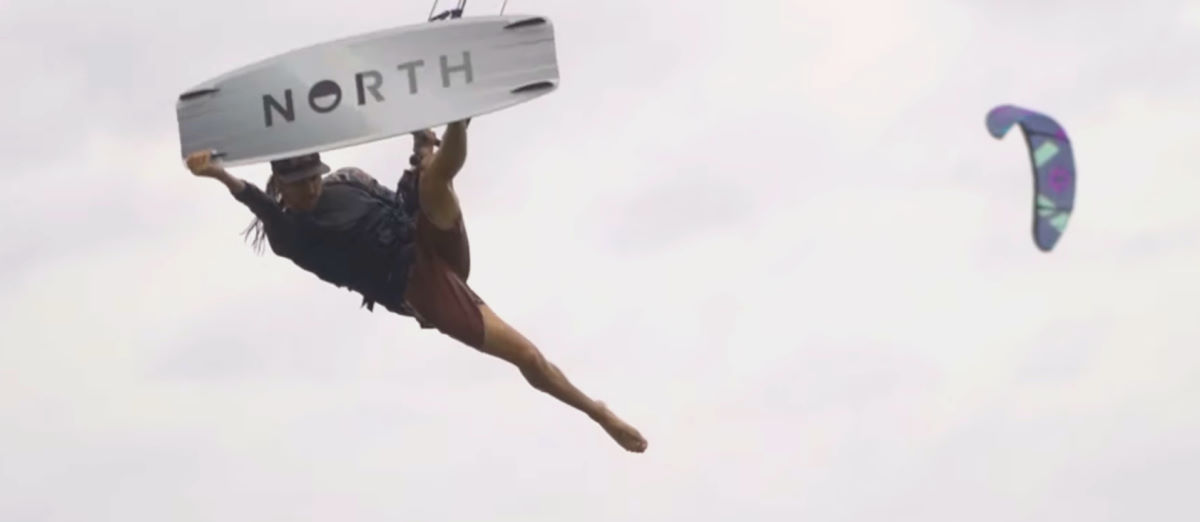
Extended One-Footer
The next variation is an extended one-footer. This is one of David's favorites and one that he does a lot because you can really make it your own with how you style it and how you twist your body in the air.
When you do this one, think about getting that board off and then trying to point and poke your back leg as far back behind you as you can while extending your arm out in front of you. Make as much of a "V" shape as you can between your back leg coming up and your arm going out so you get a lot of extension and a lot of room.
Once you get comfortable, you can rotate a little and look underneath the board as it's coming across you, which can be fun when you're with friends and you're kind of joking around. It allows you to go a little bigger with these one-footers, twist your body in different ways, and showcase your own style. This one really lends itself to discovering the different movements that are comfortable to you and can help make the trick your own.
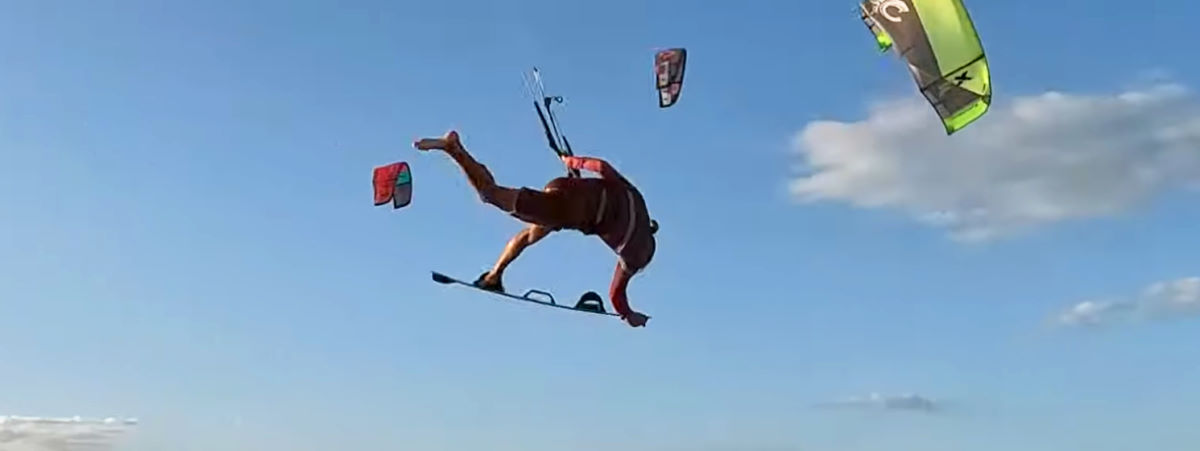
One-Footer in Front
Up until now, you've always taken your foot out and extended it behind you. This time you'll pull that foot out and then extend it in front of your board. The first time you do it, it's probably going to feel a little bit odd because you're doing one motion with your leg and then reversing it to lift your leg up and over the board and poke it out forward. A lot of people like to mix these motions together. You can first go back and extend a little bit, and then go out and go forward. That can be a fun addition, especially if you've got enough hangtime. It gives you a bit of extra style to do something different.
The One-Footer in Front can be a fun one for twisting your body in the opposite direction because you're going to bring your arm back to get your leg in front, so naturally it's going to twist your body a bit in the opposite way of the Extended One-Footer. This is another great addition because you're able to start making these your own and doing what you want to do with them.
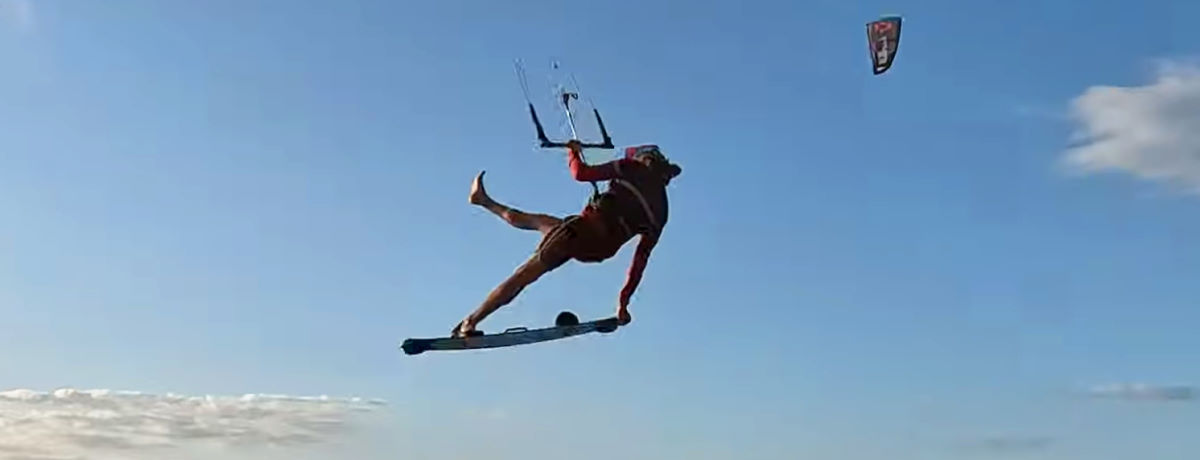
No-Handed One-Footer
The No-Handed One-Footer is easier to do if you sneak your back foot out a little bit before you do your jump. This will make it much easier to pull that foot out without grabbing the board. In the rest of the One-Footers, even if your foot's in there really snugly, you're able to pull the board off your foot when you've got your hand on it, but if your hands aren't there, you'll need to be able to slide that foot out easily. You'll also need to be able to put it back in quite easily since you're not going to have that hand to push it back in.
As with the regular One-Footer, focus on keeping your eyes on that footstrap the whole time. While you're first learning it, it's probably going to feel weird as the board swings from one foot. If you snowboard, you'll be used to this feeling from sitting on the chairlift with the weight of an entire board dangling from one leg. As soon as you pull your foot out, the board's going to want to swing away from you, so the best thing you can do is to engage your hip flexors and try to keep your leg up to stop the board from swinging too far. You can also curl your toes into that footpad to help stop the board itself from swinging around your foot.
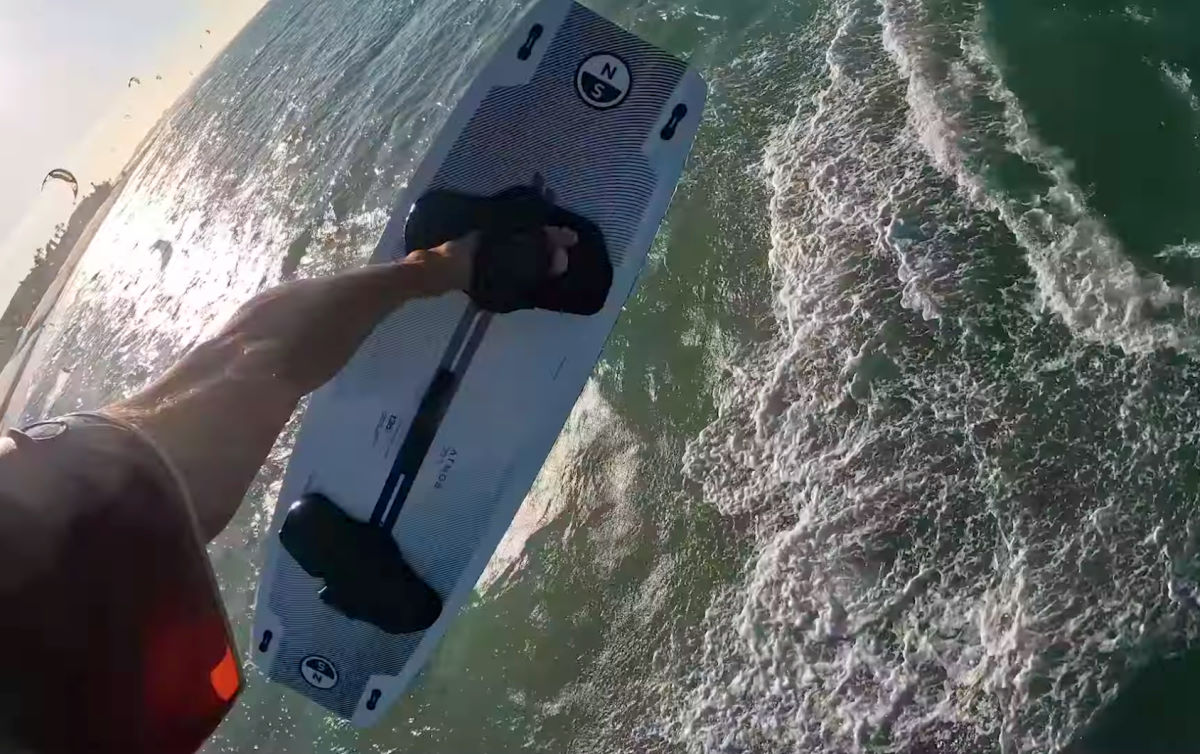
Jump, then look down and watch for the footpad as you slide that foot out. If you want to help keep yourself compact or just have a little bit of fun with it, grab your back ankle as you're up in the air. This looks cool and fun, but it also keeps your body compact, which helps keep you from having too many things swinging around.
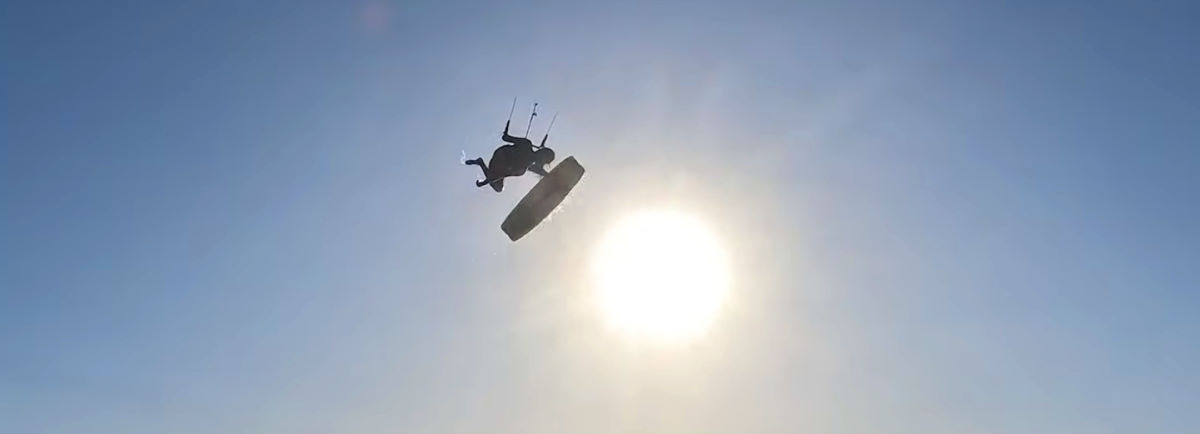
When you're ready to try to put your foot back in, you're going to have to do a lot with your front leg compared to all the other One-Footers which use your arm to bring the board in. So flex hard with that front leg to swing the board up, then catch it on the way up. It won't sit and stay there like when you're holding it with your hand to get your foot in, so you're going to have to catch it during this movement. The harder you can flex your foot into the footpad and hold it tight, twisting your ankle to pull that board up, the more time you're going to have to get back in, but it is still going to be a quick movement to catch back in. Most likely, your foot's not going to go all the way in like you're used to with the other One-Footers where you can pull with your hand and make sure your foot gets where you want it to be on the footpad. Because of this, you might be landing with your foot only partially in, so try to make sure to land very flat and downwind.
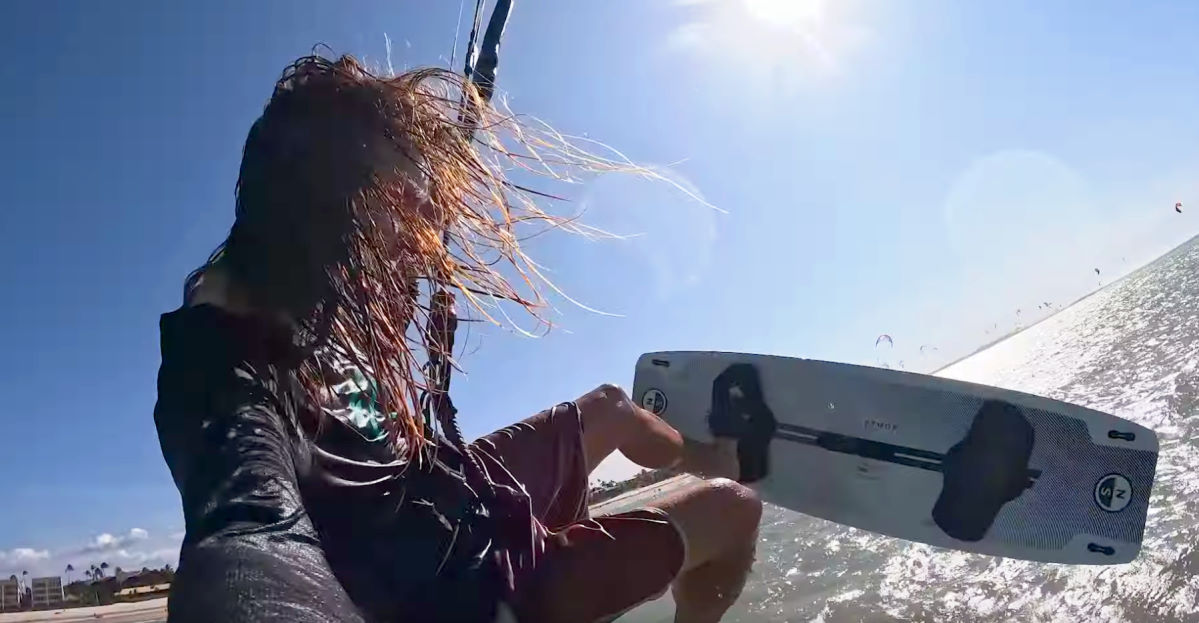
Give these variations a try, and we'll see you on the water!
MACkite Subscription Links:
YouTube | Instagram | Spotify Oddcasts
Contact MACkite Below:
800.622.4655 | Kiteboarder@MACkite.com | LIVE Chat Messenger
Recent Posts
-
Light Wind Kiteboarding Magic? The Reedin WhisperModel Might Be the Answer
Jeff from MACkite had a chance to meet up with Kevin Langeree of Reedin in Cape Town, South Afri …22nd Apr 2025 -
Hot New Releases: MACkite Brand Parawing & Mystic Majestic Ex Custom Harness
MACwing v.5 Beta Single Skin Single Use Jake and Ryan from MACkiteboarding unveiled an excit …1st Apr 2025 -
Code Foils 1250R, with Josh Ku and James Casey | Training, Gliding, and Light Wind Downwinding
Introduction: The Rise of the 1250R The Code Foils 1250R is the latest and largest addition to Co …1st Apr 2025




